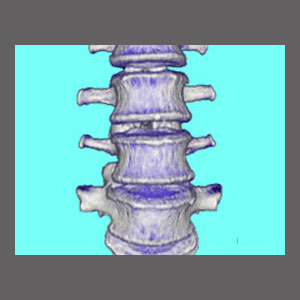
Compression fracture spinal stenosis describes central or neuroforaminal canal narrowing that is caused or worsened by one or more damaged vertebrae. Compression fractures are common spinal injuries in the elderly demographic and can also occur in people with low bone density or patients who are morbidly obese.
Compression fractures might not cause any pain and many do not create any symptoms whatsoever. However, depending on the nature of the injury, pieces or fragmentary debris from the affected vertebra can become lodged in the central or foraminal canals, enacting a stenosis condition.
This dissertation centers on exposing the very real possibility of suffering spinal stenosis due to compression fractures in the vertebral column. We will detail the causes of compression breaks and how these conditions can be treated successfully.
What is Compression Fracture Spinal Stenosis?
Compression fractures are defined as vertebral breaks that are not caused by true trauma, but instead or enacted by the weight of the body steadily crushing down on the backbone.
Compression fractures should never occur in healthy younger patients that demonstrate a tendency to be height and weight proportionate and do not suffer from any bone density concerns. Instead, compression fractures are often seen in the elderly, as well as people who suffer osteopenia, osteoporosis and osteomalacia. The final demographic of compression fracture patients includes people are obese and therefore risk damaging their spines simply due to their heavy mass.
Compression fractures usually do not behave anything like traumatic fractures in a healthy vertebral bone. Compression fractures occur in soft bones that tend to crumble under weight and stress, rather than break at sharply defined fracture lines. The result is multiple pieces or countless tiny fragments of bone that are now free within the spinal canal. Of course, these blockages are the source of the stenosis, regardless of whether the narrowing occurs in the central canal or the foraminal openings. Therefore, compression fracture-enacted stenosis describes a blocked vertebral or foraminal passageway that is caused wholly, or in part, by debris from a soft bone fracture.
Fracture-Related Spinal Stenosis Causes
Compression fractures occur in the elderly because bones often become brittle and weak with advancing age. As people get older, their bones can become increasingly more porous, leading to poor density and a sponge-like internal texture filled with many air spaces.
Over time, the weight of the body, compounded by any type of stress, can cause tiny fractures to develop, forming the beginning of a compression break. If the process continues, the entire vertebra can collapse under the weight of the body, possibly creating stenosis and spinal instability.
The same process occurs in obese people, except their bones are not generally weak. Therefore, when compression breaks occur, the results usually include multiple solid pieces of vertebrae that might contribute to a stenotic condition or an unstable spine.
People of any age who suffer from osteopenia or osteomalacia can suffer identical compression fractures to elderly patients.
Compression Fracture Spinal Stenosis Treatment
Compression fractures that do not create pain, neurological symptoms or stenosis may not require any active treatment at all. Some fractures will stabilize and not cause further trouble, while others might become symptomatic in the future.
Treatment for some types of vertebral fractures can be accomplished using innovative surgical techniques, such as vertebroplasty and kyphoplasty. These operations utilize special cements to reconstruct damaged vertebral bones in the least invasive way possible.
Many compression fractures will not be correctable using minimally invasive care, so full spinal surgery may be needed. In these cases, the spinal canal is cleaned manually by the surgeon and all the vertebral debris is removed, eliminating the stenotic blockage. These types of procedures are usually followed by immediate spondylodesis surgery to fuse the spine into a viable supportive structure once again.
Elderly patients might be contraindicated from receiving many forms of surgery, due to advanced age and generally poor health. Likewise, obese patients might present heightened risks for complications during surgical treatment, so some might not be ideal candidates for operative interventions.
Compression Fracture Can Rarely Cause Spinal Stenosis
Since spinal stenosis is already a significant problem for many elderly patients, the occurrence of even a relatively mild compression fracture can create dramatic canal narrowing expressions in a very short time frame, often necessitating emergency treatment.
Luckily, younger patients with known osteopenia and osteomalacia conditions can be forewarned of their susceptibility to compression breaks and can therefore make effectual lifestyle modifications to prevent said occurrences in many instances.
In order to prevent suffering a heightened risk of enduring compression fractures in your life, always be sure to adhere to these simple suggestions:
Eat properly and be sure to provide yourself with the full recommended daily requirement of calcium and minerals to keep the spine strong and healthy.
Be sure to perform skeletal loading exercise throughout life to strengthen bones and soft connective tissues.
Finally, maintain a healthy weight that is proportionate to your height and avoid drastic up-and-down weight swings that can cause a wide range of terrible health consequences.
Spinal Stenosis > Causes of Spinal Stenosis > Compression Fracture Spinal Stenosis






